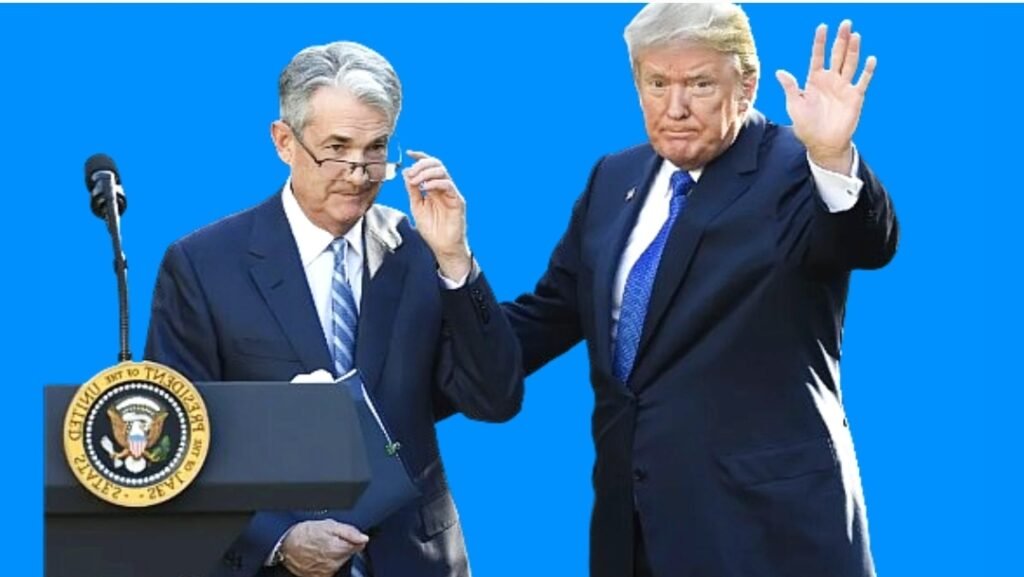Fed Chairman Says He Won’t Step Down Even If Trump Asks Him: The head of the US central bank has responded to speculation that his position could be in jeopardy as Donald Trump prepares to take power in Washington.
Federal Reserve Chairman Jerome Powell said he would not step down if asked by Trump and that it was “legally impermissible” for the White House to force him to step down.
Powell’s comments came in response to questions from reporters during a news conference, after the central bank announced it would cut borrowing costs, reducing the benchmark lending rate to 4.5%-4.75%.
Economists have expected borrowing costs to fall further in the coming months, but they have also warned that Trump’s plans to cut taxes, tariffs and immigration could increase inflationary pressures and increase government borrowing, complicating those expectations.
Trump has pledged to impose tariffs of at least 10% on all goods imported into the country, costs that economists say would be passed on to consumers, contributing to higher prices.
Tax cuts could also stoke inflation by encouraging spending, while Trump’s proposed mass deportations of immigrants would create a huge gap in the US workforce and are expected to push up wages.
Interest rates on US debt have already risen this week, reflecting those concerns.
Powell said in remarks on Thursday, November 7, 2024, that it was too early to know how the new administration’s agenda might affect the US economy — or how the Fed should respond.
“It’s very early days, we don’t know what the policies will be, or when they will be implemented,” he said, noting that “in the near term, the results of the election will not affect our policy decisions.”
Trump appointed Powell to head the Fed in 2017, but he has since become a frequent target of his criticism.
During his first term, Trump has called bankers “morons” on social media, and has reportedly reached out to advisers about whether he could fire Powell.
US media reported this year that Trump’s allies were looking for ways to increase the White House’s influence over the Fed, including sidelining Powell by naming a replacement before his term ends.
Trump told Bloomberg over the summer that he would allow Powell to serve out his term until 2026, “especially if I think he’s doing the right thing,” adding that he has the right to express his views on Fed decisions.
Powell, however, has said he would not resign if Trump asked him to, and that trying to fire him before his term ends is “not allowed by law.”

Powell has faced intense scrutiny in recent years, with rates set to rise in 2022.
The central bank responded by raising interest rates quickly that year, raising them from near-zero levels to about 5.3% in July, the highest level in more than two decades.
The increases have hit the public hard by pushing up borrowing costs for credit cards, mortgages and other loans, contributing to growing discontent over rising living costs, particularly in the housing sector, which played a role in the election.
The Federal Reserve began to change course in September, cutting interest rates by 0.5 percentage points, confirming its confidence that the pace of price increases in the United States was beginning to stabilize.
Inflation in the United States was 2.4% in September, after exceeding 9% in June 2022, according to the latest official figures.
The cut announced Thursday was the second in a row, with another 0.25 percentage point reduction in interest rates, and was widely expected.
Powell said in his latest remarks that officials remained equally focused on price stability and the health of the labor market.
Although concerns about rising unemployment had escalated earlier in the year, they eased in September after data showed an unexpected increase in hiring.
But the latest figures showed almost zero job growth in October, as the country grappled with hurricanes and strikes.
Could Hurricane Milton really be “staged”?
Inflation: Five ways the U.S. rate hike will affect your life
Powell said officials expect to continue cutting rates, but the extent and speed of the cuts were not yet clear, and he tried to dodge questions seeking more precise answers.
“We don’t think this is the time to provide a lot of additional guidance, there is a fair amount of uncertainty. The goal is to find the right pace and direction as we go forward,” he said.
Whitney Watson, co-head of fixed income at Goldman Sachs Asset Management, said her firm expects another rate cut in December, but acknowledged questions about the path forward.

“Stronger data and uncertainty on fiscal and trade policy mean there is a higher risk that the Fed may choose to slow the pace of easing,” she said.
It also suggested the central bank could start to “skip” interest rate cuts next year.
The Fed’s decision came on the same day that the Bank of England warned that borrowing rates could take longer to fall, warning that inflation could rise after last week’s budget.
“In the US and the UK, we’re seeing expectations of future rate cuts fall significantly compared to what many had originally hoped for,” said Lindsay James, investment strategist at Quilter Investors.
“In the US, interest rates look set to stay higher for longer, with the Fed needing to tread carefully until it is better able to assess the true impact of Trump’s plans.”
